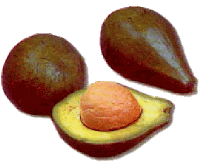Nutritional status of children is the state of child health is determined by the degree of physical needs energy and other nutrients derived from food and food antroppometri measurable physical impact (Suharjo, 1996), and categorized based on WHO-NCHS standards with indexes BB / U, TB / U and BB / TB, Indications measurement of this variable is determined by:
- Weighing Weight (BW) and Height measurements (TB) Performed by nutrition clinicians in accordance with the terms of the judgment.
- Determination of the age of the child is determined according to the date of weighing and measurements BB TB, then reduced to the date of birth of the children taken from the identity data on each school, provided 1 month is 30 days and 1 year was 12 months.
Objective criteria stated in the average Z score and the number of standard deviations (SSB) and the group as a presen induvidu the median reference standard (Waterlow.et al, in, Djuamadias, Abunain, 1990) In order to calculate SSB formula can be used:
Where: NIS : Value Individual Subjects
NMR : Median Value Reference
NSBR : Raw Simpang Value Reference
The measurement results are categorized as follows
1. For BB / U
Nutrition Less If SSB <- 2 SD
Good Nutrition When SSB -2 s / d +2 SD
Nutrition More If SSB> +2 SD
2. TB / U
Short When SSB <-2 SD
Normal When SSB -2 s / d +2 SD
When high SBB> +2 SD
3. BB / TB
Skinny If SSB <-2 SD
Normal When SSB -2 s / d +2 SD
Grease If SSB> +2 SD
And nutritional status also interpreted according to three anthropometric indices, (Department of Health, 2004). And categorized as shown in Table 3




















++1.jpg)







.jpg)




















